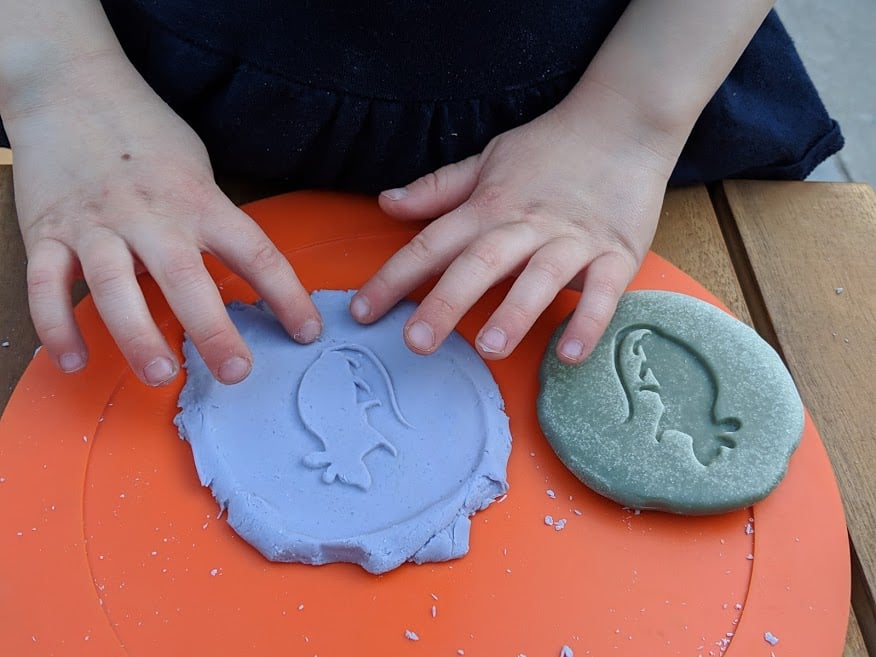
"The hands," wrote Dr. Maria Montessori, "are the instrument of man's intelligence." Squishing, rolling, sculpting, molding . . . young children love to play with playdough. Add some props from around the home and playdough play becomes a powerful way to support your child’s learning. This simple preschool staple lets children use their imaginations and strengthen the small muscles in their fingers—the same muscles they will one day use to hold a pencil and write.
Through manipulations, children develop eye-hand coordination, the ability to match hand movement with eye movement. They also gain strength and improve dexterity in their hands and fingers, critical areas of physical development for writing, drawing, using scissors, zipping zippers and buttoning buttons.
When children use this malleable material, they explore ideas and try different approaches until they find one that works. They compare and contrast objects ("Mine is a fat pancake and yours is skinny”), actions ("Let’s scrape it, like this”), and build connections with patterns, lines, and shapes ("We were making a snake, but now it looks like a really long road”). In their experimenting, children come up with their own ideas, satisfy their curiosity, and analyze problems.
Add sand or water to the playdough and then talk about how this new kind of dough looks and feels. Introduce words like texture, grainy, smooth, and lumpy. Your child might declare, "I’m making this flat!” as she pushes down on playdough with the palm of her hand. Or she may say, "I’m making it soft,” as she adds water to dry playdough to make it more pliable.
Make your own batch of playdough at home and see for yourself!
INGREDIENTS:
- 2 cups plain flour
- 2 tbsp vegetable oil
- ½ cup salt
- 2 tsps cream of tartar
- 1 to 1.5 cups warm/ hot water
- Food coloring (color of your choice)
- A few drops of glycerine (optional, for extra stretch and shine)
- Mix the flour, salt, cream of tartar, and oil in a large mixing bowl
- Add food coloring to the water, then add the water with food coloring to the dry ingredients
- Stir continuously until it becomes a sticky, combined dough
- Add the glycerine (optional)
- Allow the dough to cool down, then take it out of the bowl and knead it vigorously for a couple of minutes until all of the stickiness has gone. If it remains a little sticky, then add flour until just right.